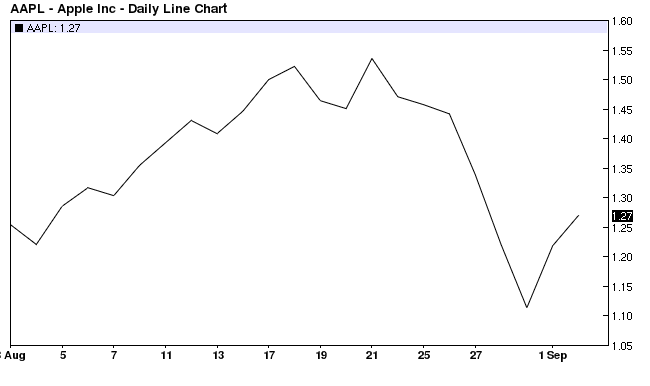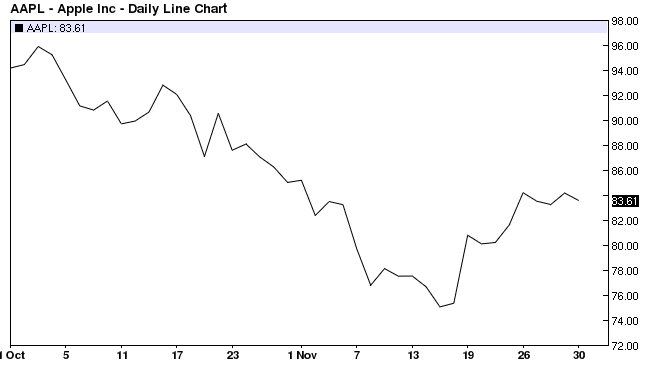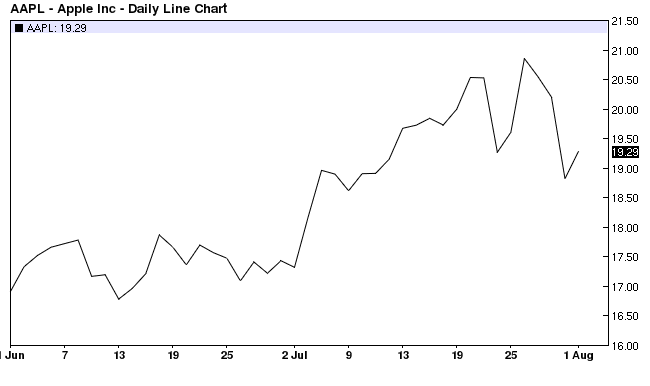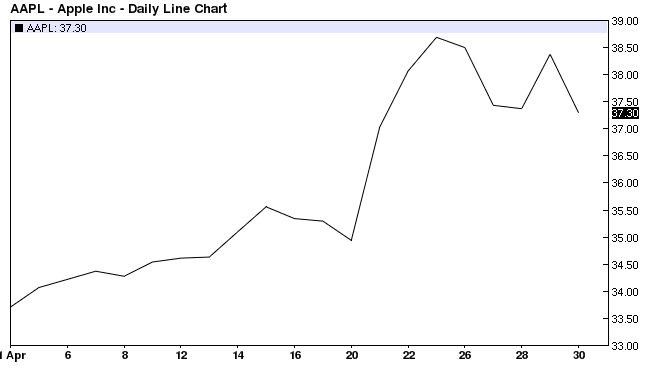[Updated March 8, 2018 by Sam Bourgi] Apple (AAPL ) has been gaining a lot of attention over the past few years with its revolutionary products and enormous cash pile, but the company definitely has hit a few bumps along the way.
In 1997, the company saw one of its worst days ever when reports were released that Microsoft (MSFT ) was helping the struggling company with its shortage of cash – Apple’s cash now accounts for nearly 10% of all corporate cash. Over the years, Apple has grown into the largest U.S. company by market capitalization. In 1998, Apple released its iMac G3, which was the beginning of its turnaround. Below are seven major product releases and how the company’s stock price reacted.
August 1998: The iMac G3 Is Launched
The iMac G3 was released on August 15, 1998. When the market re-opened on Monday, August 17 the stock rose 3.56%, but AAPL’s stock declined 14% during the next month. Regardless of the stock price decline and criticism about the new product, the iMac G3 was the primary cause of Apple’s turnaround.
The product was known for its bright colors and was in production until 2012.

In 1998, Steve Jobs announced the launch of Apple’s iMac G3 at this presentation. Below is a flashback of this revolutionary product.
October 2001: Apple Releases First iPod
The first iPod was released on October 23, 2001. The new product was a revolutionary invention for the music world, but its release caused Apple’s stock price to dip 2.71% the first day and 5.57% the following day. Apple’s stock price took almost a month to rebound.
The iPod was released just eight months after Apple introduced iTunes. Since the release of its original iPod, Apple has released over 20 other versions of the music player. Until the iPhone was released, this product was Apple’s largest revenue stream.

In 2001, Steve Jobs revealed the iPod to the world at a casual Apple music event. Jobs noted that this new product had great potential since it would be the first of its kind.
June 2007: The First iPhone is Released
The first iPhone was revealed in January 2007 and was released on June 29, 2007. The day of its release, Apple’s stock rose 1.23% and surged 16% within the next month. Steve Jobs reported that he hoped to sell 10 million iPhones in 2008. Analysts and investors were skeptical, but Apple ended up selling 13.7 million iPhones in 2008.

In this 2007 presentation, Steve Jobs introduces the first iPhone – a phone that would change the industry forever. Jobs overviews the different features of the phone, which combined a phone, iPod and an internet device.
April 2010: Apple Releases the First iPad
On April 3, 2010 Apple released its first iPad. The company’s stock price had no major reaction when the market opened on Monday, April 5, but its stock price rose 13% by the end of the month. Although the stock price did well the month of its iPod release, the increase was partially due to better than expected earnings released at the end of the month.
Since the release of Apple’s original iPad, there have been four other iPads released including the iPad Mini.

September 9, 2014: The iPhone 6 & iWatch are Launched
The iPhone 6, iPhone 6 Plus and iWatch were launched on September 9 and then later released on September 19. During the first weekend, Apple sold 10 million units of its iPhone – more than any other iPhone in the past.
Despite the enormous amount of sales, the stock suffered after reports that the phone was prone to bending.

iPhone 7/7 Plus
Since the launch of the iPhone 6 in 2014, Apple has expanded its product offerings to appeal to a wider audience. This began with the iPhone 7, which also included an iPhone 7 Plus model. With the latest round of iPhones, Apple has introduced more affordable options alongside its premium edition as a means of growing its business in emerging markets.
From a stock perspective, this strategy appeared rocky at first, with share prices stagnating and even declining between 2015 and 2016.
The iPhone 7 and iPhone 7 Plus were announced on Sept. 7, 2016 and released less than two weeks later. The announcement of the new iPhones sent AAPL shares tumbling, but the decline was short-lived after the company announced it had sold out of all initial quantities of the iPhone 7 Plus ahead of the Sept. 16 launch.T-Mobile also announced that the iPhone 7 had broken the carrier’s single-day pre-sale record.

iPhone X
The election of Donald Trump to the presidency in November 2016 was a boon to Wall Street and information technology stocks in particular. In the process, Apple shares touched multiple record highs.
Apple’s strategy shifted again in 2017 when the company announced the $1,000 iPhone X – a steep asking price in the highly saturated smartphone market. The iPhone X was announced on Sept. 12 alongside the iPhone 8 and iPhone 8 Plus models. The phones were released on Nov. 3. Share prices fluctuated during the announcement, declining sharply toward the end of September before rebounding markedly ahead of launch day. About one week after launch, AAPL was back at record highs.

Although the iPhone X received glowing reviews, the product has suffered from lower-than-expected demand, with analysts downgrading their sales targets for the product. The company’s Q4 2017 earnings report showed a 1% drop in total iPhone sales from a year ago.
It remains to be seen whether higher-end models like the iPhone X will remain part of Apple’s long-term strategy. Share prices have held up fairly well since the announcement even as the broader market experienced a massive correction at the start of February.
The Bottom Line
Apple continues to be the bellwether of the smartphone industry, and its share prices reflect consumer optimism in the future of the Cupertino-based company. That being said, investors continue to expect more innovation from Apple. Although these expectations are often difficult to quantify, an inability to deliver ground-breaking innovation could weigh on share prices moving forward.
For more information on Apple’s earnings, be sure to check out 5 Charts to Put Apple’s Earnings in Perspective.





